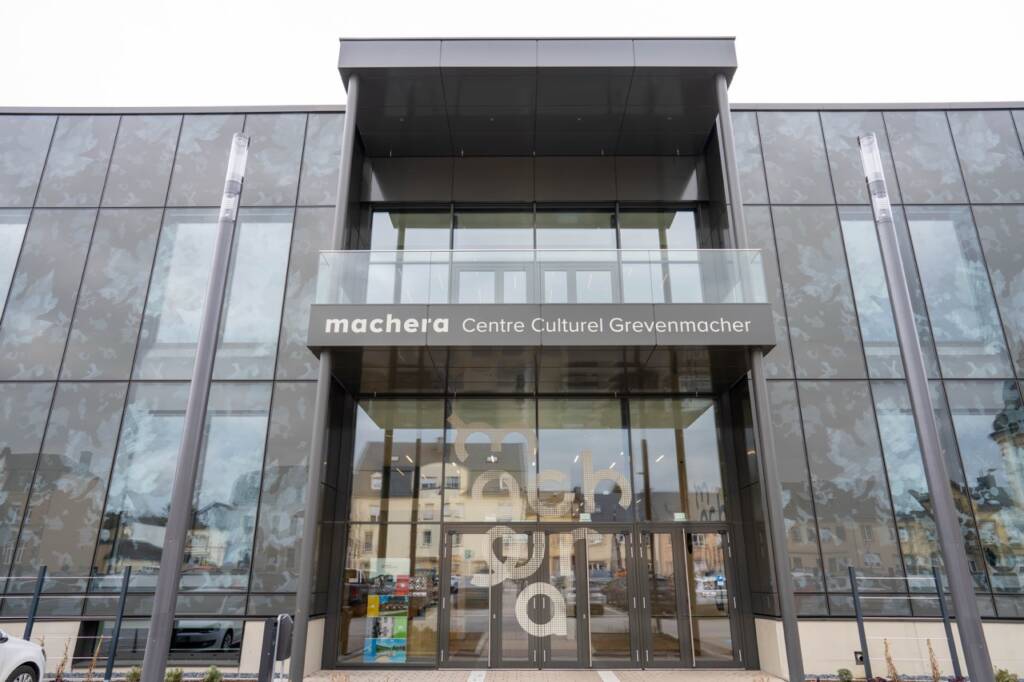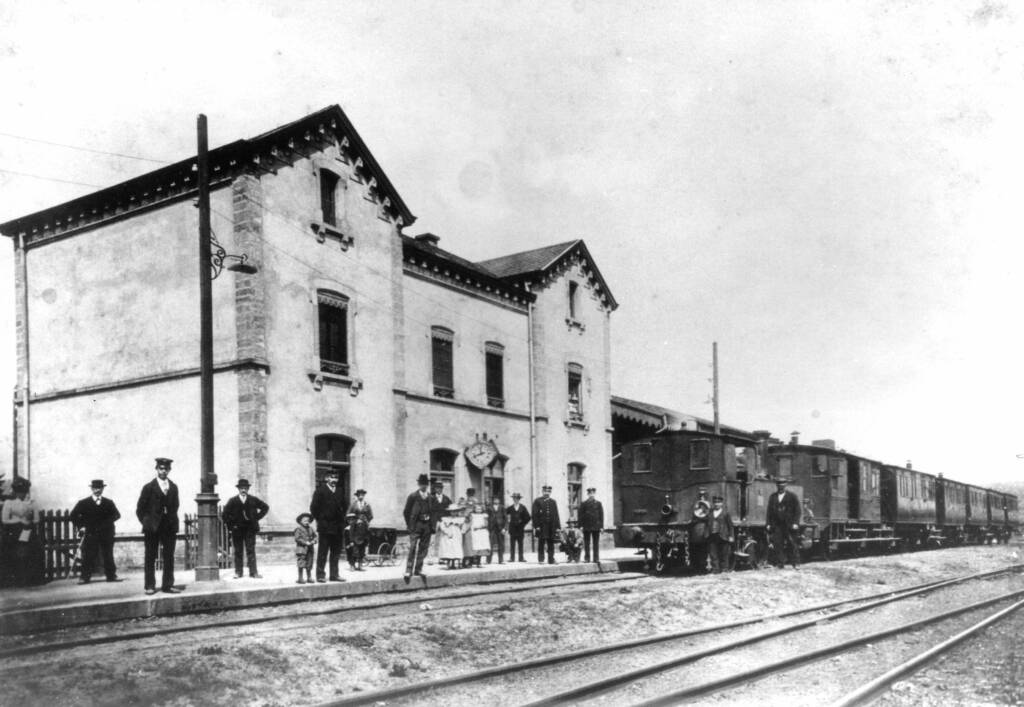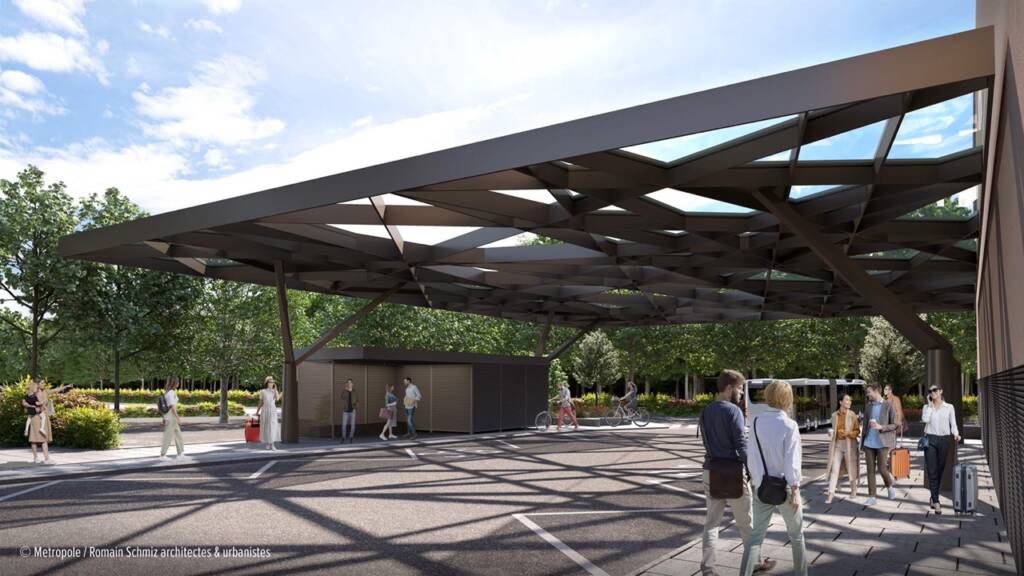About the Cultural Centre MACHERA and its surroundings

The Machera Cultural Centre on the ‘Schweinsmoart’ in Grevenmacher. (Photo: Machera)
Construction of the new building began on the 6th of July 2020.
Architectural firm: Schumacher Schmiz Architectes.
Planning offices: Schroeder & Associés, Goblet Lavandier & Associés.
Control office: Vinçotte, Luxembourg.
By the end of August / beginning of September 2024, the work was largely completed, and the cultural centre was partially ready for use.
Total cost: € 40.000.000.
The official opening of the Cultural Centre Machera took place on the 22nd of November 2024 in the grand hall, which spans 1,160 square metres and features a 160-square-metre stage.
The cultural centre also includes a new underground car park with 129 spaces across two levels.

A view into the concert hall of the Machera Cultural Centre. (Photo: Machera)
Machera is the first documented name of Grevenmacher. Around the 7th century, a small settlement called “Villa Machera” was situated along the Roman road connecting Trier, Luxembourg, Metz and Reims. The name “Alkërrech”, in the Potaschberg industrial zone, serves as a reminder of this early settlement.
The name appears for the first time in written form in the valley town of “Grafenmachern”, on the seal that Duke Wenceslaus I granted the locality in 1357 along with its market rights: “Sigillum Libertatis de Machera.”
This name was the most frequently suggested in a public survey conducted during the 2024 Wine Market. Additionally, the Grevenmacher Rose, which has had a permanent place in the Osburg Garden since 2023, bears the name “Machera”- a name of historical significance that refers to the rich history of the “Moselle metropolis”.
Today, the “Schweinsmoart” is a large, newly designed car park equipped with seating areas. Historically, this square was used for livestock trading, which explains its name. The fountain, which was uncovered during the recent remodelling, also bears witness to this.
Before the construction of the new Cultural Centre Machera, a previous sports and cultural centre stood on the “Schweinsmoart.” This building was inaugurated on the 21st of January 1977 in the presence of Grand Duke Jean.
Covering a total area of 2,478 square metres, it featured a 1,243-square-metre multi-purpose sports hall, primarily used for school sports and local clubs, as well as a several rooms available for both sports and cultural clubs and events, this building represented a significant added value to the cultural and sports offerings of the city of Grevenmacher.

The ‘Centre sportif et culturel’ in 2014 (Photo: Monique Hermes)
From 1891 to 1970, the Grevenmacher railway station stood on the site where the Cultural Centre Machera is now located. This impressive building was constructed when Grevenmacher was connected to the railway network.
The six-kilometre single-track railway line from Grevenmacher to Wasserbillig was part of the Prince Heinrich Railway, and passenger trains ran until the 23rd of May 1954, after which the service was replaced by buses.

The railway station in Grevenmacher with train in 1910 (Archive Photo-Club Flash)
As Grevenmacher is currently served by 13 regular bus lines as well as various school bus routes, a modern, covered bus station was built next to the Cultural Centre Machera.
This facility includes a bike box with space for 26 bicycles, lockers for helmets, public restrooms, a wheelchair-accessible restroom (PMR) and a separate restroom for bus personnel.
The structure was designed by the architectural firm Schumacher Schmiz Architectes. The technical aspects were handled by the firm Goblet & Lavandier, while Schroeder & Associés was responsible for project management, structural engineering, and the design of the surrounding area.
Total cost: € 3.760.000.

A view of the modern bus station next to the Machera Cultural Centre. (Metropole visualisation 3 D)
Compiled by: Monique Hermes

